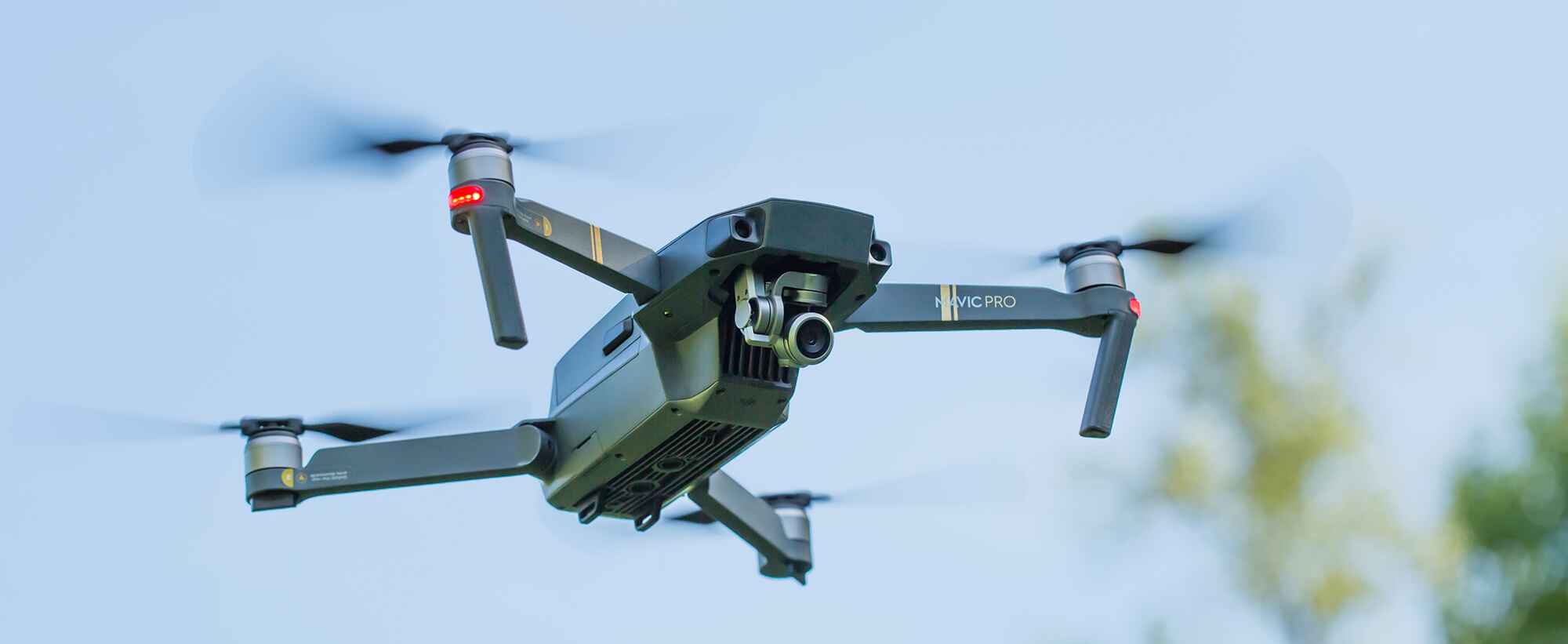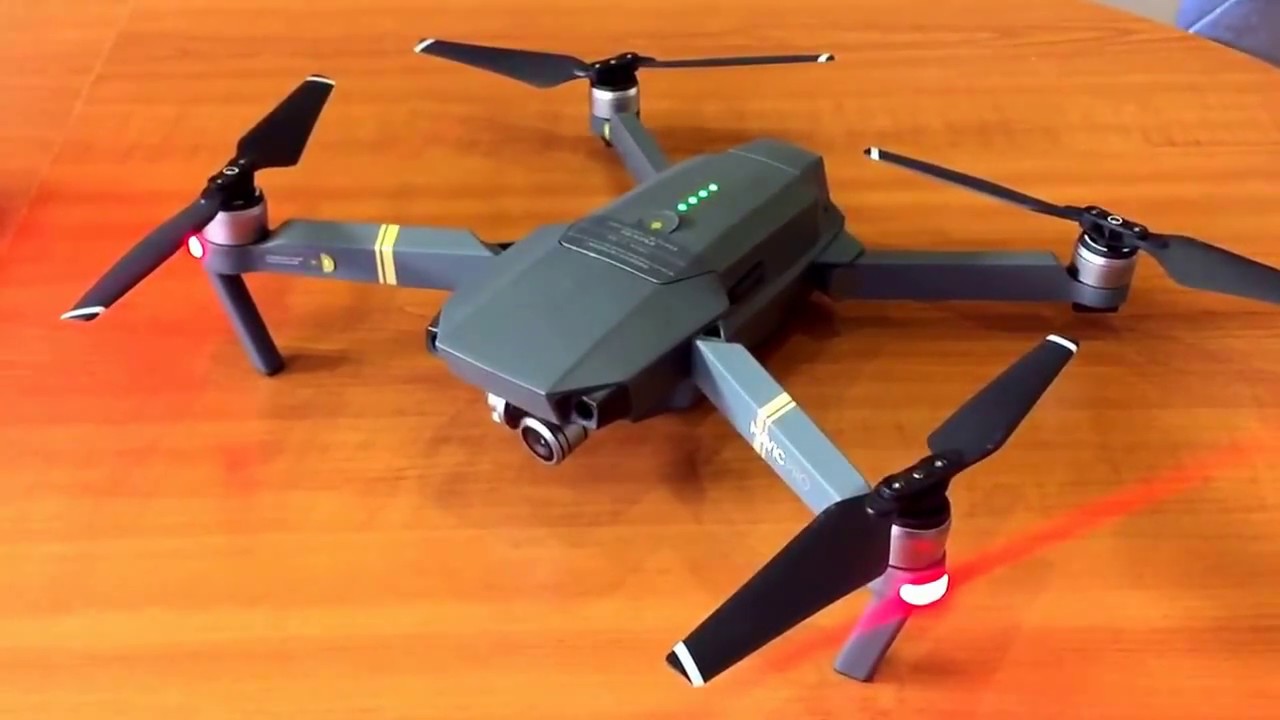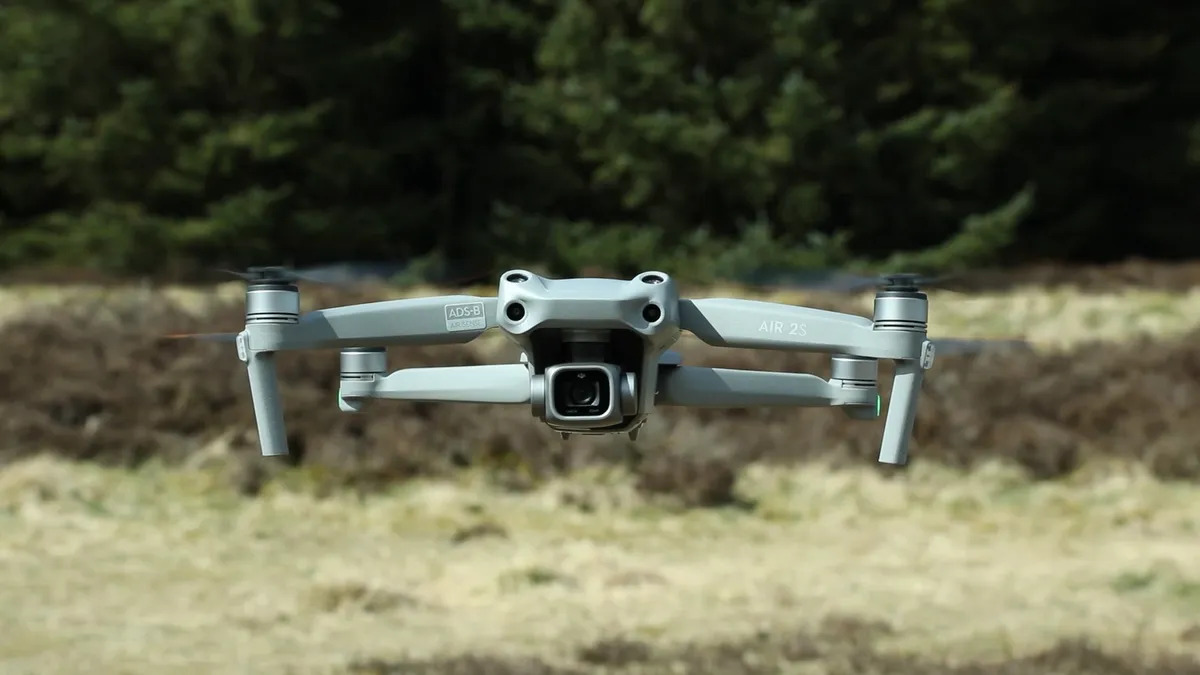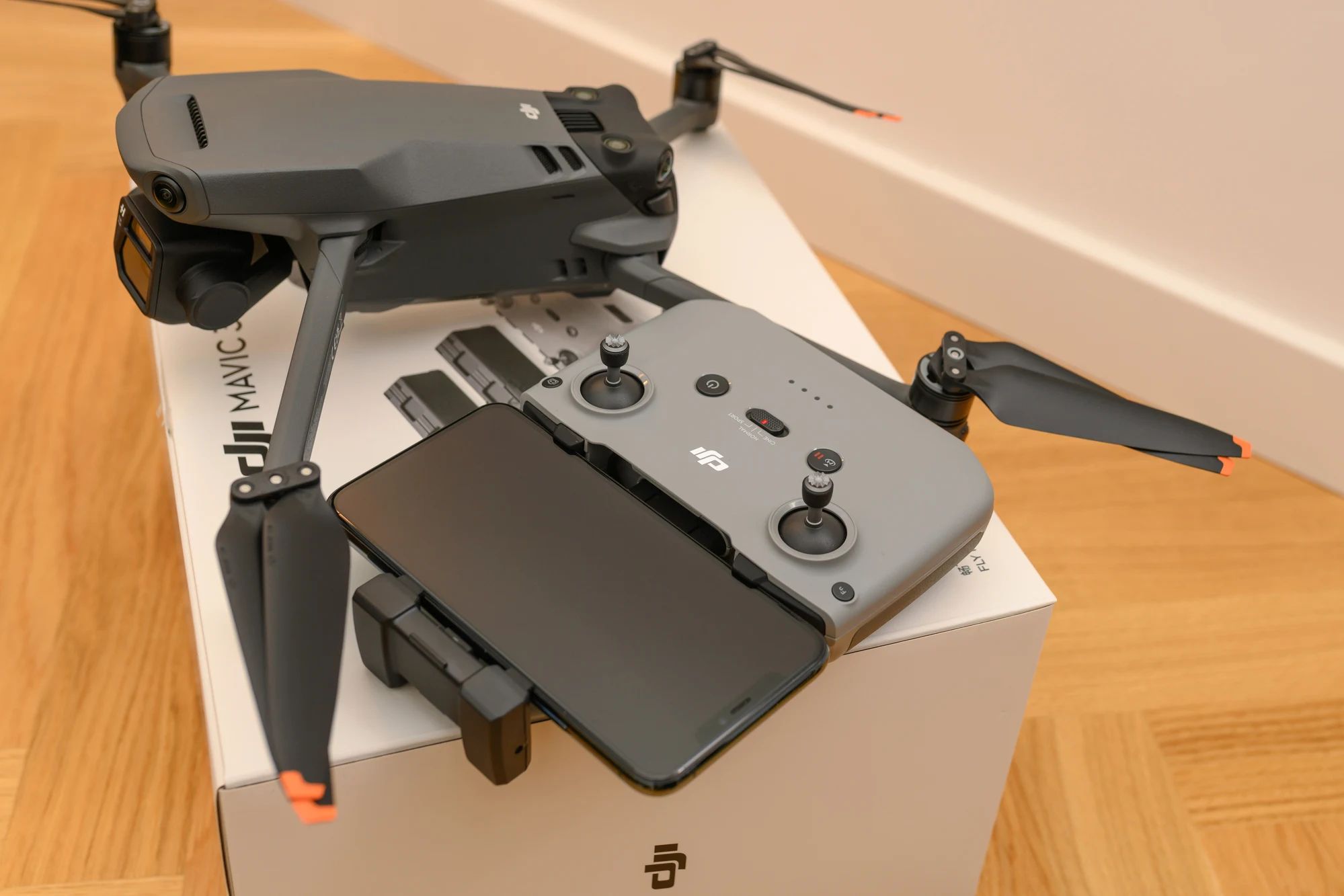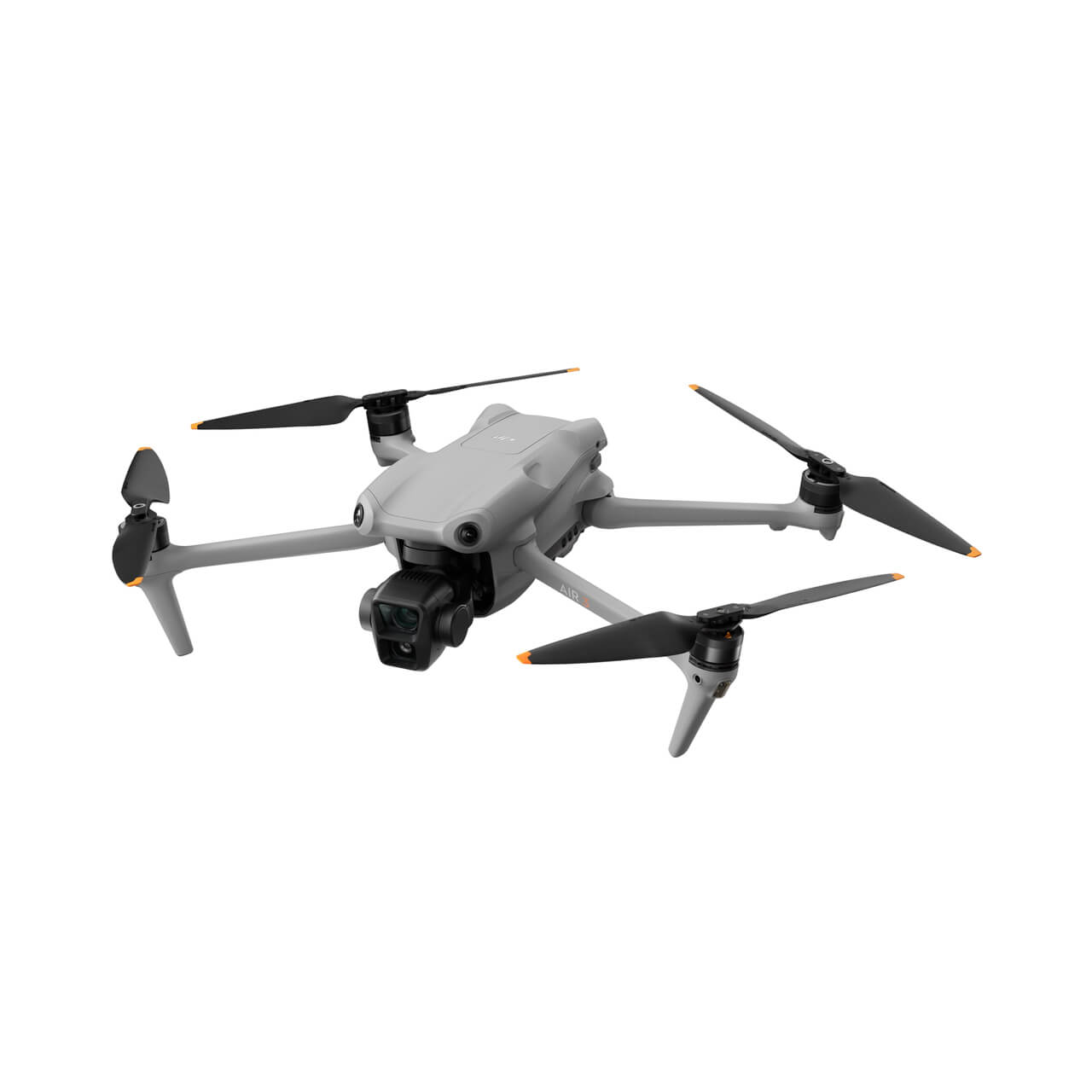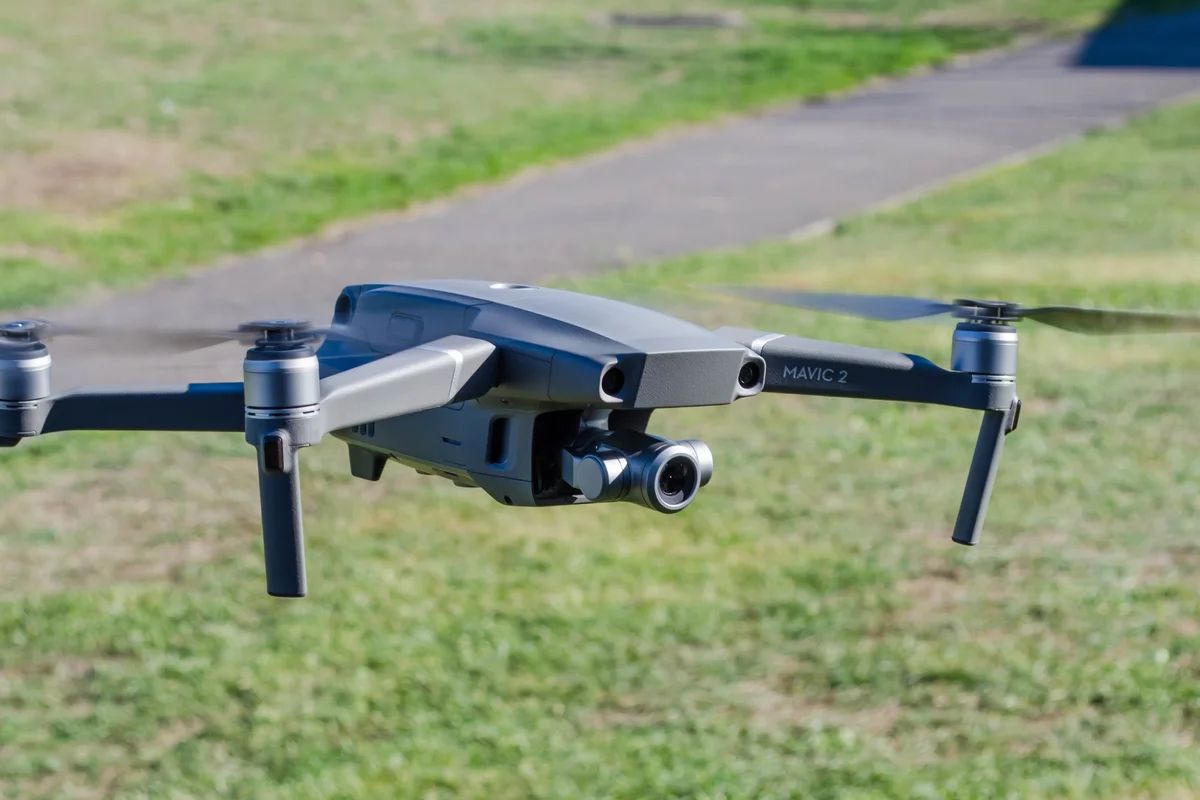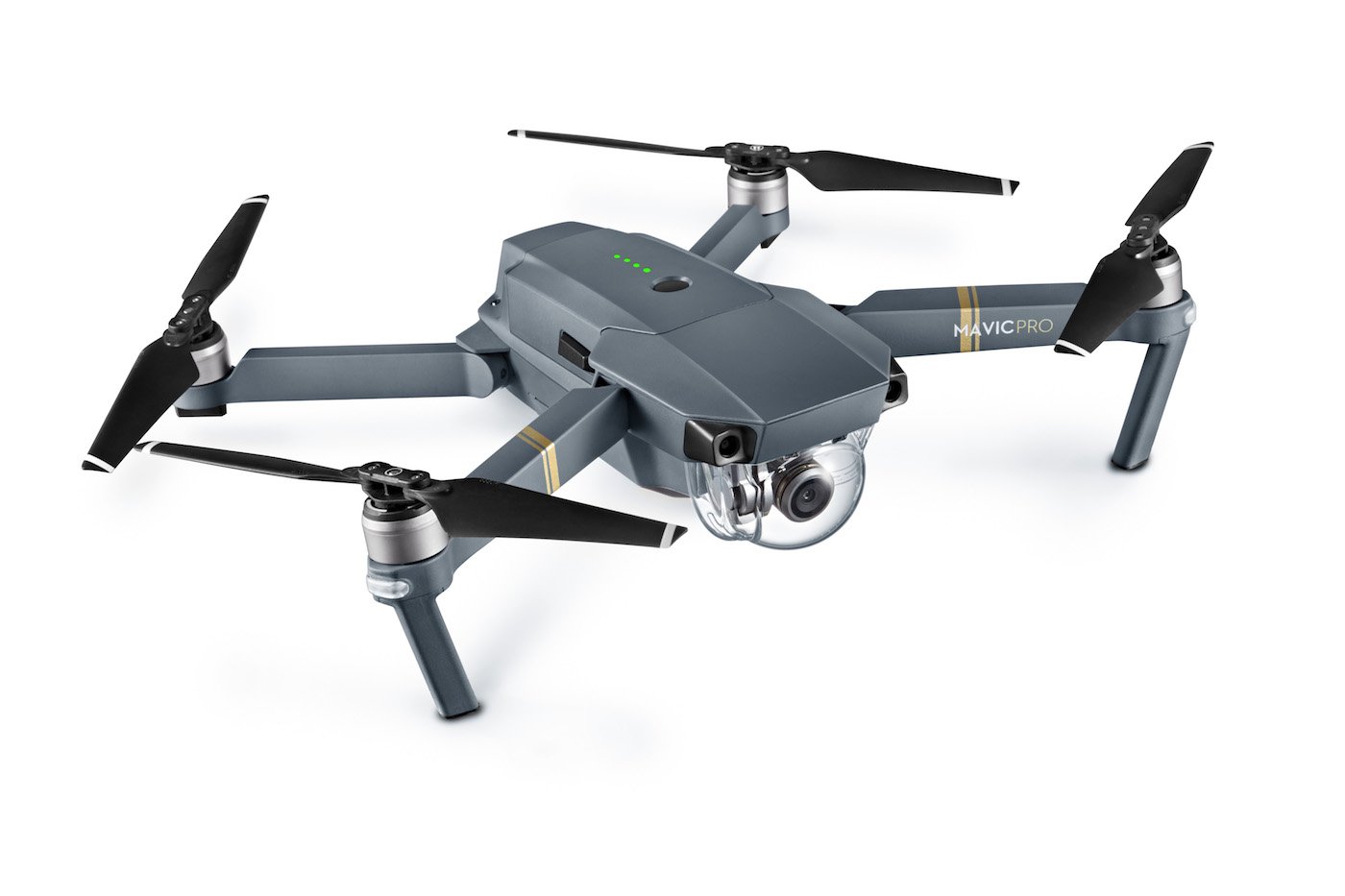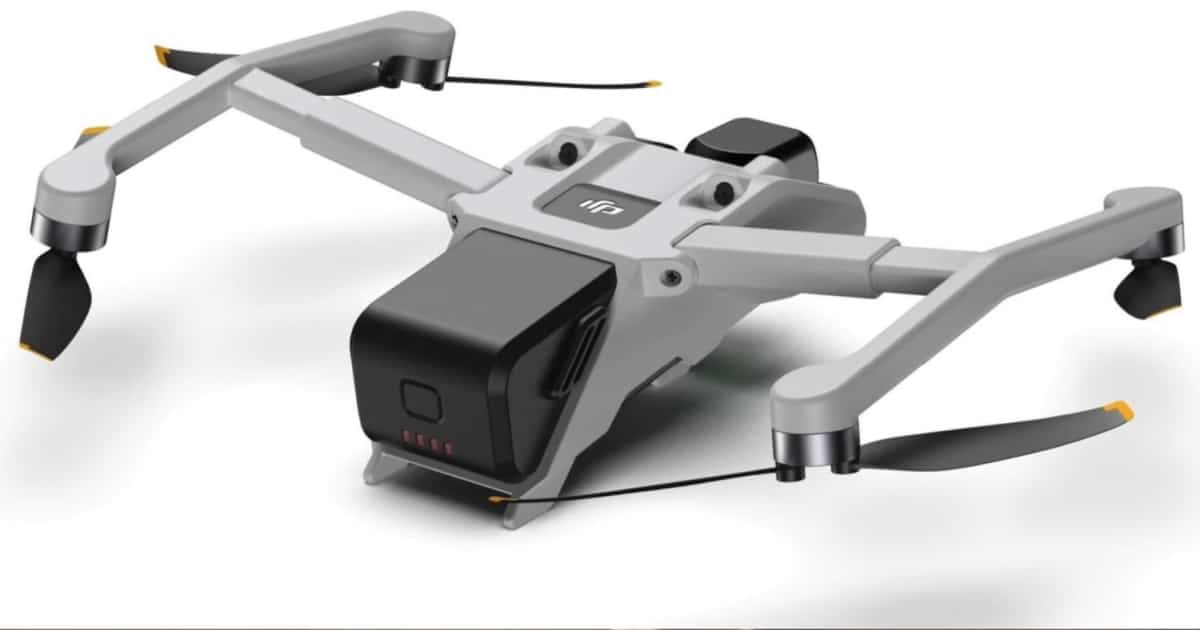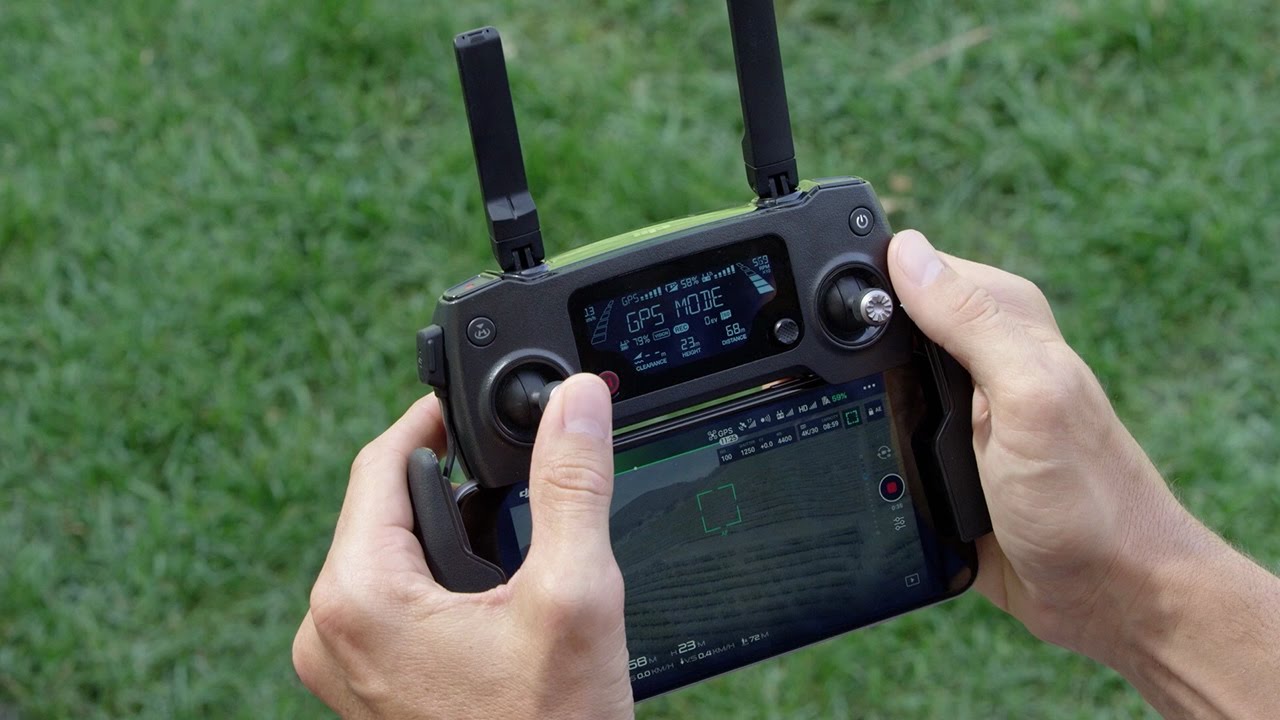Introduction
The DJI Mavic Pro is a compact and powerful drone that has gained popularity among both professional photographers and hobbyists. One of the key features that makes the Mavic Pro stand out is its impressive flight range. But just how far can the DJI Mavic Pro fly? In this article, we will explore the factors that influence the Mavic Pro’s flight range and conduct a real-world test to determine its maximum distance.
With advancements in drone technology, the DJI Mavic Pro boasts an impressive flight range that enables it to capture breathtaking aerial footage over vast distances. Whether you are using it for aerial photography, videography, or simply exploring the world from a bird’s-eye view, understanding the Mavic Pro’s flight range is essential for planning your flights and maximizing your drone’s capabilities.
While the Mavic Pro’s flight range may vary depending on various factors, including environmental conditions and flight mode, DJI provides an estimated maximum distance in its official specifications. However, it’s important to note that real-world flight distances may differ from the official specifications. To get a clearer picture of the Mavic Pro’s actual flight range, we conducted our own test.
In this article, we will delve into the factors that can influence the DJI Mavic Pro’s maximum distance, such as battery life, signal strength, and flight mode selection. We will also share our findings from the real-world test, highlighting the challenges and considerations when pushing the Mavic Pro to its limits.
Whether you’re a professional aerial photographer planning long-distance shoots or a hobbyist looking to explore the capabilities of your DJI Mavic Pro, this article will provide valuable insights into how far you can expect to fly your drone. Stay tuned as we dive into the details of the Mavic Pro’s flight range and uncover tips to maximize its potential.
Understanding the DJI Mavic Pro’s Flight Range
The flight range of the DJI Mavic Pro refers to the maximum distance the drone can fly from the remote controller before losing signal or experiencing other limitations. It is an essential factor to consider when planning drone flights and ensuring a successful aerial photography or videography session.
Several factors influence the Mavic Pro’s flight range. One of the most critical aspects is the battery life. The Mavic Pro typically has a flight time of around 27 minutes, but this can vary depending on various conditions, such as wind speed and flying speed. It’s crucial to monitor the battery level and plan your flight accordingly to avoid the drone running out of power mid-flight.
Another factor that can affect the flight range is signal strength. The Mavic Pro utilizes DJI’s OcuSync transmission technology, which provides a strong and reliable connection between the drone and the remote controller. However, obstacles such as buildings, trees, and interference from other electronic devices can weaken the signal and limit the drone’s range. It’s advisable to maintain a clear line of sight between the drone and the remote controller to maximize the signal strength.
Additionall,y the flight mode selected on the Mavic Pro can impact its flight range. The drone offers different flight modes, including the standard mode, sport mode, and tripod mode. Sport mode allows for faster speeds but consumes more battery, while tripod mode focuses on stability and limits the drone’s speed. By understanding the capabilities and limitations of each flight mode, you can choose the most suitable one to optimize your flight range.
It’s also worth noting that weather conditions such as strong winds, rain, or extreme temperatures can affect the Mavic Pro’s flight range. High winds can reduce the drone’s stability and increase power consumption, leading to a shorter flight range. It’s important to check the weather forecast before flying and avoid unfavorable conditions that could compromise the safety and effectiveness of your flight.
By considering these factors and understanding the Mavic Pro’s flight range limitations, you can plan your drone flights more effectively. In the next section, we will explore the official specifications provided by DJI regarding the maximum flight range of the Mavic Pro.
Factors That Influence the DJI Mavic Pro’s Maximum Distance
Several key factors can influence the maximum distance that the DJI Mavic Pro can fly. Understanding these factors is crucial for optimizing the drone’s flight range and ensuring a successful flight experience. Let’s take a closer look at these factors below:
1. Battery Life: The Mavic Pro’s flight time is directly dependent on its battery life. Fully charged, the drone can typically fly for around 27 minutes. However, various conditions such as wind speed, flying speed, and payload can impact the battery consumption, resulting in a shorter flight time. Monitoring the battery level and planning your flights accordingly is essential to avoid the drone running out of power mid-flight.
2. Signal Strength: The DJI Mavic Pro utilizes advanced transmission technology, such as DJI’s OcuSync, to establish a strong and reliable connection between the drone and the remote controller. However, obstacles like buildings, trees, or electromagnetic interference can weaken the signal and limit the drone’s range. Maintaining a clear line of sight between the drone and the remote controller can help maximize the signal strength and extend the flight range.
3. Flight Mode: The Mavic Pro offers different flight modes, each with its own impact on the maximum flight distance. Sport mode allows for faster speeds but consumes more battery power, resulting in a shorter flight range. On the other hand, tripod mode prioritizes stability over speed, thus limiting the drone’s maximum distance. Choosing the appropriate flight mode to match your flight requirements can help optimize the drone’s flight range.
4. Environmental Conditions: Weather conditions such as wind speed, rain, and temperature can significantly impact the Mavic Pro’s flight range. Strong winds can affect the drone’s stability, increase power consumption, and reduce the maximum distance it can fly. Similarly, adverse weather conditions like rain or extreme temperatures may limit flight capabilities and pose risks to the drone’s performance. Checking the weather forecast and avoiding unfavorable conditions is essential for maximizing the Mavic Pro’s flight range.
5. Payload: The weight and distribution of the payload, including camera equipment or additional accessories, can impact the Mavic Pro’s flight performance. Heavier payloads increase power consumption, thereby reducing the drone’s flight time and maximum distance. It’s important to consider the weight and balance of the payload when planning your flight to ensure optimal performance.
By taking these factors into account, you can effectively manage and optimize the DJI Mavic Pro’s flight range. Understanding the limitations and capabilities of the drone in different scenarios will enable you to plan your flights more efficiently and achieve the desired results.
DJI Mavic Pro’s Maximum Flight Range According to Official Specifications
Officially, DJI provides specifications regarding the maximum flight range of the Mavic Pro, giving users an estimate of the drone’s capabilities. According to DJI, the Mavic Pro has a maximum range of up to 4.3 miles (7 kilometers) when there are no obstructions or interference in the surrounding environment.
This impressive range is made possible by the advanced technology and features integrated into the Mavic Pro. The drone is equipped with DJI’s OcuSync transmission system, which enables a strong and reliable connection between the drone and the remote controller. With this technology, users can confidently fly their Mavic Pro at extended distances while maintaining a stable connection.
It’s important to note that the maximum flight range specified by DJI is under optimal conditions. In real-world scenarios, factors such as signal interference, environmental conditions, and flight mode selection can impact the actual flight range. Therefore, it’s crucial to consider these factors and exercise caution when pushing the boundaries of the Mavic Pro’s capabilities.
Additionally, it’s worth mentioning that aviation regulations and local laws may impose restrictions on the maximum flight range of drones. It’s essential to familiarize yourself with the regulations and guidelines in your area to ensure that you operate the Mavic Pro within the legal limits.
While the official specifications provide a general guideline, it’s always recommended to conduct your own test flights to determine the drone’s range in your specific environment. By doing so, you can gain firsthand knowledge of how the Mavic Pro performs under various conditions and make more informed decisions regarding flight planning and drone operations.
In the next section, we will conduct a real-world test to determine how far the DJI Mavic Pro can actually fly and explore the factors that can influence its maximum distance.
Real-World Test: How Far Can the DJI Mavic Pro Fly?
To determine the actual flight range of the DJI Mavic Pro, we conducted a real-world test under various conditions and environments. Our goal was to push the limits of the drone’s capabilities and provide valuable insights for Mavic Pro users.
We began the test in an open area with no obstructions and minimal signal interference. Using the Mavic Pro’s standard flight mode, we gradually increased the distance between the drone and the remote controller while monitoring the signal strength and battery life.
During the test, we observed that the Mavic Pro maintained a stable connection and displayed excellent performance up to a distance of around 4 miles (6.4 kilometers). However, as we approached the maximum specified range, the signal started to weaken, resulting in intermittent video feed and control latency. We decided to hover the drone at this point to avoid any potential loss of control.
It’s important to note that the actual flight range can vary based on individual conditions, such as environmental factors and signal interference. In our test, we encountered some interference from nearby buildings and Wi-Fi networks, which may have impacted the Mavic Pro’s performance.
We also tested the Mavic Pro’s flight range in less ideal conditions, such as areas with mild to moderate signal interference. In these environments, we observed a reduction in the drone’s flight range, with the signal degrading at a shorter distance compared to the open field test. This highlights the significance of maintaining a clear line of sight and minimizing interference to maximize the Mavic Pro’s flight capabilities.
In addition to signal strength, we paid close attention to the battery life during our real-world test. We found that under normal flight conditions, the Mavic Pro’s battery could sustain a flight time of approximately 22-25 minutes, which is slightly shorter than the official specifications. However, it’s worth mentioning that windy conditions and aggressive flight maneuvers can further reduce the battery life.
Based on our real-world test, it is evident that the DJI Mavic Pro offers an impressive flight range, reaching approximately 4 miles under optimal conditions. However, it’s essential to consider the limitations and factors that can influence the drone’s performance, such as signal interference and battery life, in order to plan your flights effectively and ensure a safe and successful aerial photography or videography session.
Now that we have explored the Mavic Pro’s flight range in different conditions, let’s delve into some valuable tips and techniques to maximize its flight range in the next section.
Tips to Maximize the DJI Mavic Pro’s Flight Range
To get the most out of your DJI Mavic Pro’s flight range and optimize its performance, consider the following tips:
1. Fly in Open Areas: When possible, choose open areas with minimal obstructions, such as buildings or trees. This will help maximize the signal strength and minimize interference, allowing the drone to fly at greater distances.
2. Maintain Line of Sight: Maintaining a clear line of sight between the Mavic Pro and the remote controller is vital for maximizing flight range. Avoid flying behind obstacles or out of sight, as this can weaken the signal and potentially lead to a loss of control.
3. Avoid Signal Interference: Be mindful of potential sources of signal interference, such as Wi-Fi networks or other electronic devices, especially in crowded or urban environments. Fly the drone in areas with minimal signal interference to ensure a stable and reliable connection.
4. Fly in Favorable Weather Conditions: Adverse weather conditions, particularly strong winds, can reduce the Mavic Pro’s flight range. Fly in calm weather conditions to optimize stability and minimize power consumption, allowing for longer flights.
5. Optimize Flight Mode Selection: Different flight modes have varying impacts on the Mavic Pro’s flight range. If maximizing distance is your priority, consider using the standard mode, which balances speed and battery consumption. Avoid sport mode if you’re looking to extend the drone’s flight range, as it consumes more battery power.
6. Monitor Battery Life: Being aware of your Mavic Pro’s battery level is crucial for maximizing flight range. Plan your flights to ensure you have enough battery power to safely return the drone to its launch point. Avoid draining the battery to its lowest level, as it could affect the drone’s performance and potentially lead to an emergency landing.
7. Upgrade Firmware: Regularly update your Mavic Pro’s firmware to ensure it benefits from the latest optimizations and performance enhancements. DJI often releases firmware updates that can improve flight range and overall drone performance.
8. Fly Responsibly: Always abide by aviation regulations and local laws regarding drone operations. Familiarize yourself with any restrictions on flight range in your area and ensure you fly the Mavic Pro within legal limits to avoid any potential legal issues.
By following these tips, you can maximize the flight range of your DJI Mavic Pro and make the most of its capabilities. Remember to prioritize safety and adhere to local regulations while enjoying the incredible aerial experiences the Mavic Pro offers.
Conclusion
The DJI Mavic Pro is a remarkable drone known for its impressive flight range and advanced features. Throughout this article, we have explored various aspects related to the Mavic Pro’s flight range, including its official specifications, factors that influence its maximum distance, real-world test results, and tips to maximize its performance.
Understanding the factors that influence the Mavic Pro’s flight range, such as battery life, signal strength, flight mode selection, environmental conditions, and payload, is crucial for planning successful drone flights. By considering these factors and implementing the tips provided, users can optimize their drone’s flight range and achieve their desired aerial photography or videography outcomes.
It’s important to remember that while the Mavic Pro offers an impressive flight range of up to 4 miles, actual results may vary depending on individual conditions. Factors such as signal interference, environmental obstacles, and battery life can impact the drone’s performance. Therefore, it’s advisable to conduct test flights in different scenarios to gain a better understanding of the Mavic Pro’s capabilities and limitations in your specific environment.
Additionally, always prioritize safety and abide by local aviation regulations and laws regarding drone operations. Familiarize yourself with any restrictions on flight range and fly responsibly to ensure a positive and legally compliant drone flying experience.
In conclusion, the DJI Mavic Pro is an exceptional drone with a remarkable flight range that allows users to capture stunning aerial footage and explore new perspectives. By understanding and implementing the factors that influence flight range, users can optimize their Mavic Pro’s performance and push its boundaries to capture breathtaking moments from the sky.







